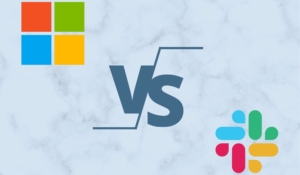Looking for pricing feedback on your product or a competitor’s? Try social listening
July 2022
Author: Bryan Belanger
July 2022
Author: Bryan Belanger

This won’t be a full post on pricing research methodologies, but I must reiterate before going further — if you’re willing to put up with the noise, there are signals to be found all over social media about your company and/or your competitor’s pricing strategy. SaaS is a close-knit community, and many SaaS influencers are also frequent buyers and users of different SaaS technologies. They are typically very willing to share their opinions on those products, and many times those opinions center on pricing.
At XaaS Pricing, we often stumble upon these insights as we scroll through our various feeds each morning. One interesting example we recently saw was via a Twitter comment that Jason Lemkin, founder of SaaStr, posted about customer engagement software vendor Intercom. The comment has since been deleted, but paraphrasing the post, Jason lamented that his company’s cost of $468 per seat, per month for Intercom was way too high.
Digging into the Twitter discourse further, it seems the sentiment from Jason is that it’s really a price-for-value situation — his company is only using basic functionality from Intercom for a single seat, making it difficult to justify a price that is something like three to four times the typical per seat, per month average cost of B2B software. Jason’s guidance is that the pricing will likely prevent his firm from expanding usage and/or buying complementary products from Intercom.
Price levels are part of the equation. But we think Intercom’s challenges around perception of its pricing model stem from a larger issue. That issue happens to be one of the biggest stumbling blocks to pricing strategy effectiveness: pricing model confusion.
There are two key causes of pricing model confusion for SaaS buyers: lack of transparency and pricing model complexity.
Lack of transparency arises when a vendor chooses not to publish any details about its pricing model or publishes only limited details. To be sure, this isn’t always a bad strategy. If you target primarily large enterprises and offer pricing that is largely customized to specific clients, this approach makes sense. But it’s still less transparent than most SaaS pricing messaging. Lack of transparency may relate directly to pricing details and/or be impacted by opaqueness on factors that impact pricing, such as packaging and how add-ons are presented.
Intercom’s lack of transparency is its first stumbling block for price positioning. Intercom provides public details on its packaging and pricing model, as well as some entry-level pricing for its Starter plan that targets SMBs. The Starter plan is priced “starting at $74 per month,” which includes two seats. Most intriguing is what Intercom publishes about its pricing model. The firm notes that pricing is based on the number of a seats an organization requires as well as the number of contacts that organizations engage per month using Intercom software.
The Starter plan comes with 1,000 contacts reached, and then customers are charged $50 per every additional 1,000 contacts reached, up to a maximum of 50,000 contacts reached. Beyond 50,000 contacts reached, customers are required to upgrade to one of Intercom’s premium plans. Intercom’s pricing page outlines that this pricing model applies to all product tiers, but outside of the Starter plan, the company does not publicly define the entitlements of each plan in terms of number of users or customers reached.
Pricing model complexity occurs when customers cannot easily understand the pricing model used by a vendor. This can happen when the vendor has chosen a model that runs counter to common models in its specific or broader category. Complexity can also occur when a vendor introduces multiple pricing models and/or pricing factors into its pricing strategy.
Both of these situations are true with Intercom. In his Twitter thread, Lemkin talked about Intercom in terms of “price per seat.” This is a signal that most buyers think of Intercom in terms of a bottom-line price per seat. However, Intercom’s pricing in practice is much more complicated than a single per-seat charge. Intercom has a dual charging metric that includes seats as well as contacts reached per month. The company also has approximately 20 add-ons for its key plans. Lastly, Intercom has regularly changed its packaging and has maintained legacy pricing and packaging for grandfathered accounts; examples of the company’s legacy pricing can be viewed here. Combined, these factors create pricing complexity and require significant price customization for individual accounts.
Confusing pricing models impair price positioning by making it difficult for customers to correlate pricing paid to value received, typically when pricing models don’t align to category-standard approaches to defining and expressing value. If customers don’t understand your actual pricing, it is difficult for them to understand where your product positions relative to market alternatives. Customers may think the price is “$74 per seat,” and they will establish a price perception based on that anchor point. However, as is the case with Intercom, the pricing also includes usage-based charges as well as add-ons.
In SaaS pricing, models are structured around a primary pricing metric as well as potential multiple secondary usage metrics. There is a primary pricing metric, which is the primary per-unit measure of pricing that defines the offering and represents how the customer is charged for the product. There are usage metrics, which are secondary factors that govern how much consumption of the software a customer is allotted for a given product tier or plan. When these critical metrics are unclear or confusing, this makes understanding SaaS pricing challenging.
In Intercom’s broader category of sales, marketing and customer engagement software, the primary pricing metric is most commonly per-user (also known as per-seat) pricing. Most companies deploy per-seat models with usage-based tiering packaging approaches. This means that the software is priced per user, per month, and each tier of that software entitles the customer to a different amount of usage, typically defined by three to five critical usage factors. Overage usage that exceeds the allotments of those usage factors may trigger overage pricing (as is the case with Intercom), may require an upgrade of seats to the next plan level, or both.
This model is what Intercom uses, and Intercom isn’t the only company in its direct space using it, either. Freshchat and Help Scout, for example, use similar approaches, with seat-based charges plus fees for customer sessions. Where Intercom fails, however, is in not making usage limits for each of its plans clear to customers. On Freshworks’ Freshchat pricing page, the company provides clear descriptions of the usage limits for each plan, which includes caps on campaign contacts, monthly bot sessions, monthly unique visitors, and several other metrics. Pricing for seats and overage usage is published on the site, as is pricing for add-on product features.
This is where Intercom gets confusing. The company provides usage limits for “people reached” for the Starter plan but doesn’t provide any details on limits for its other larger plans. It is unclear whether the same limits and pricing mechanics for the Starter plan apply to the larger plans, and the pricing page doesn’t outline any other quantitative caps on usage for other features. There is also no Q&A page to address these types of questions for prospective customers. This makes it difficult for the buyer to understand the usage triggers that would signal value and correspond to additional pricing paid.
When this happens, the ownership of your company’s pricing strategy narrative shifts from your company to the market and your competitors since they can and typically will offer more details than are available on your company’s pricing page. For example, this Intercom competitor is using pricing confusion as a key positioning point against Intercom. It has even solicited screenshots of customer invoices to highlight exactly how Intercom’s model works. Popular customer software pricing discussion board Capiche has a lively thread on Intercom pricing in which multiple customers provide experiential insights on what they pay. Many customers on the thread also emphasize how Intercom pricing is confusing, complex and/or expensive.
To summarize, there are some key rules of thumb that can help you avoid confusing customers about your SaaS product’s pricing. Here’s what we recommend:
If you’re interested in future analyses like this one, be sure to subscribe here. If you have any pricing questions or there’s something you’d like to see covered in a future post, as always, please contact me at [email protected].
 ©2022 XaaS Pricing. All rights reserved. Terms of Service | Website Maintained by Tidal Media Group
©2022 XaaS Pricing. All rights reserved. Terms of Service | Website Maintained by Tidal Media Group

 How to normalize product comparisons for pricing analysis [including an exa...
How to normalize product comparisons for pricing analysis [including an exa...